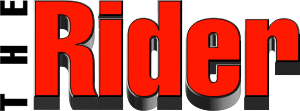Insiders Guide: Six Steps to an Effective Training Program
Pro and Non Pro articles written by Jen Jonas of Jonas Performance Horses and Sharon Jones of Be A Better You.
Jen’s focus and passion is reining horses; training them and the riders who aspire to show them. Jen is a successful show person with many buckles and trophies. She is also a versatile and effective coach – many of her students have won awards and classes and go from strength to strength. Sharon is one of Jen’s students, her day job is training people in ‘soft skills’ with a specialty in emotional intelligence and she wrote a best-seller on the topic, called Tread Gently.
Both Jen and Sharon are believers in continual learning – if you’re not learning you’re not growing.
Article Objective
This article‘s objective is to help the non-pro riders have a positive and successful training program to ensure success in the show pen. A successful training program has a foundation of knowledge and learning – and keeping an open mind is fundamental.
 1) Assess Needs
1) Assess Needs
Jen: I always start my rides with the assumption that my horse is going to ride just great. The horse is going to be soft and supple, rhythmic; balanced in all their maneuvers so the execution will be flawless. If you don’t start with this mindset then you won’t be able to pinpoint the areas of challenge for your horse. Of course, not every ride is going to be flawless - I don’t want to just get on and start correcting what I might think needs work. I need to know what needs work today, not what we had to work on during our last ride. Ride and feel what your horse is lacking – is the horse soft in the face? How is the horse running its circles, are they circles or odd-shaped ovals? How is the horse’s stop, is he or she getting in to the ground? Can the horse run a straight line or are they a wiggly worm today? How is the horse spinning, is he or she trying for you or lolly-gagging around? Is the horse responsive to the neck rein and guiding effectively?

2) Set Objectives
Jen: From feeling what the horse has presented to me that day I then ask myself what I want to accomplish in this ride. What would create the most effective response in this training session? For example, if my horse wasn’t soft in the face that would be my main objective during this session to work on, as it is a major issue which perhaps is why they are not stopping or spinning as well as they should.
Sharon: I ride with Jen about once a month and she gives me homework. The biggest challenge I have with my horse is getting her and keeping her soft in the face, that’s the first thing I check for and a lot of the times this is where I focus - I have learned from Jen how important the face is; and to keep the shoulders up. If I don’t have the face then I can’t control the shoulders.
 3) Create an Action Plan
3) Create an Action Plan
Jen: Now I set in my mind to how I’m going to address whatever the issue is, and if it is a softness in the face issue, I select a few exercises that will get my horse softer. Make sure you match your exercises to the level of the horse that you are riding (two-year-old vs a five-year-old). Try and stay focused on the immediate issue and not get caught up in the minor issues that might arise from fixing the softening. Remember the point of the exercise.
4) Implementing the Training
Jen: When riding through your exercises remember to let the horse figure out what you are asking and not force them into it. When they achieve what you are asking reward and don’t drill the exercises. Monitor your progress to ensure the program is effective. An extra set of knowledgeable eyes on the ground is an asset.
Sharon: A big learning for me is to be patient – the horse can’t learn if you are mad at it – it’s up to you as the pilot to set the course and steer and make sure in a calm, consistent, fair, and firm way the horse understands. If the horse gets upset, then he or she is not in a learning mode.
 5) Evaluate & Revise Training
5) Evaluate & Revise Training
Jen: Your training program should be continually monitored and evaluated to make sure it is successful. A good program will take in what works and what doesn’t work. A great program will be the same - and include the welfare of the horse, physically, emotionally, and mentally.
6) The Final Analysis
In the end having a thoughtful training program and being consistent with it will put you and your horse onto the right path so that you can ensure your horse knows his or her job, and is happily able to do it.
Top two photos are Sharon Jones. Bottom two are Jen Jonas. Photo credit Dallas Jane and Tom Gruszka.


